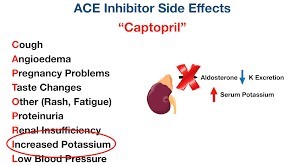A nurse is providing discharge teaching about disease management for a client who has a new diagnosis of type 1 diabetes mellitus. Which of the following activities is the nurse's priority?
Instruct the client about the importance of regular medical appointments.
Encourage the client to participate in daily exercise.
Explain proper foot care techniques to the client.
Ensure that the client understands the medication regimen.
The Correct Answer is D
- A. Instructing the client about the importance of regular medical appointments is important but not the priority because it is a secondary prevention strategy that aims to detect and treat any complications or changes in the client's condition early. The client should have regular follow-up visits with an endocrinologist, a diabetes educator, an ophthalmologist, a podiatrist, a dentist, and other health care providers as needed.
- B. Encouraging the client to participate in daily exercise is important but not the priority because it is a tertiary prevention strategy that aims to reduce disability and improve quality of life for clients with chronic conditions. Exercise can help lower blood glucose levels, improve insulin sensitivity, reduce cardiovascular risk factors, enhance mood, and promote weight management for clients with type 1 diabetes mellitus. The client should consult with their health care provider before starting an exercise program and follow safety guidelines such as checking blood glucose levels before and after exercise, wearing appropriate footwear and clothing, carrying a source of fast-acting carbohydrate, and staying hydrated.
- C. Explaining proper foot care techniques to the client is important but not the priority because it is a tertiary prevention strategy that aims to prevent or minimize complications such as foot ulcers, infections, and amputations for clients with type 1 diabetes mellitus. Foot care includes inspecting feet daily for any injuries or abnormalities, washing feet with mild soap and warm water, drying feet thoroughly especially between toes, applying moisturizer to prevent dryness and cracking, trimming toenails straight across and filing edges smooth, wearing clean cotton socks and well-fitting shoes, avoiding walking barefoot or exposing feet to extreme temperatures or pressure, and seeking medical attention for any foot problems.
- D. Ensuring that the client understands the medication regimen is the nurse's priority because type 1 diabetes mellitus requires lifelong insulin therapy to maintain blood glucose levels within normal range and prevent complications such as ketoacidosis, hypoglycemia, and organ damage. The client needs to know how to administer insulin injections, monitor blood glucose levels, adjust insulin doses according to carbohydrate intake and physical activity, recognize and treat signs and symptoms of hypo- and hyperglycemia, and store insulin properly.
Nursing Test Bank
Naxlex Comprehensive Predictor Exams
Related Questions
Correct Answer is D
Explanation
Place the client in a quiet environment.
- A. Limiting suctioning the client's airway to 30 seconds at a time can reduce intracranial pressure by minimizing hypoxia and hypercarbia, which can cause cerebral vasodilation and increased cerebral blood volume. However, this intervention alone is not sufficient to prevent increased intracranial pressure, and suctioning should be done only when necessary and with caution. Therefore, this choice is partially correct but not the best answer.
- B. Grouping several nursing activities to be completed at one time can increase intracranial pressure by stimulating the client and causing fluctuations in blood pressure and heart rate.Therefore, this choice is incorrect.
- C. Flexing the client's neck forward can increase intracranial pressure by impeding venous drainage from the brain and increasing cerebral blood volume. Therefore, this choice is incorrect.
- D. Placing the client in a quiet environment can reduce intracranial pressure by minimizing sensory stimulation and promoting relaxation, which can lower blood pressure and heart rate and decrease cerebral metabolic demand. Therefore, this choice is correct and the best answer.
Correct Answer is B
Explanation

- A is incorrect because tinnitus, or ringing in the ears, is not an adverse effect of captopril, but rather a symptom of other conditions such as ear infection, noise exposure, or medication toxicity.
- B is correct because cough is a serious adverse effect of captopril, which is an angiotensinconverting enzyme (ACE) inhibitor that can cause angioedema, or swelling of the airways.
- C is incorrect because polyuria, or excessive urination, is not an adverse effect of captopril, but rather a symptom of other conditions such as diabetes mellitus, diabetes insipidus, or diuretic use.
- D is incorrect because blurred vision is not an adverse effect of captopril, but rather a symptom of other conditions such as eye strain, refractive error, or cataract.
Whether you are a student looking to ace your exams or a practicing nurse seeking to enhance your expertise , our nursing education contents will empower you with the confidence and competence to make a difference in the lives of patients and become a respected leader in the healthcare field.
Visit Naxlex, invest in your future and unlock endless possibilities with our unparalleled nursing education contents today
Report Wrong Answer on the Current Question
Do you disagree with the answer? If yes, what is your expected answer? Explain.
Kindly be descriptive with the issue you are facing.
